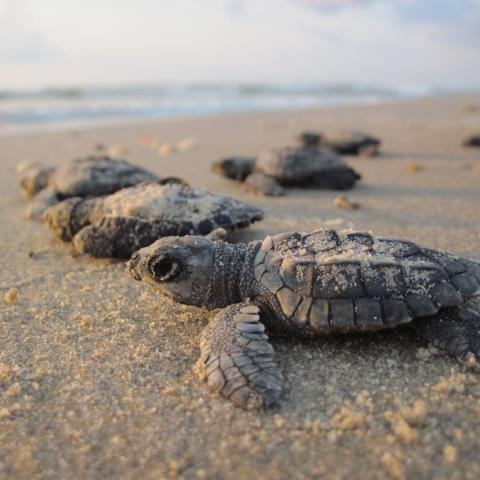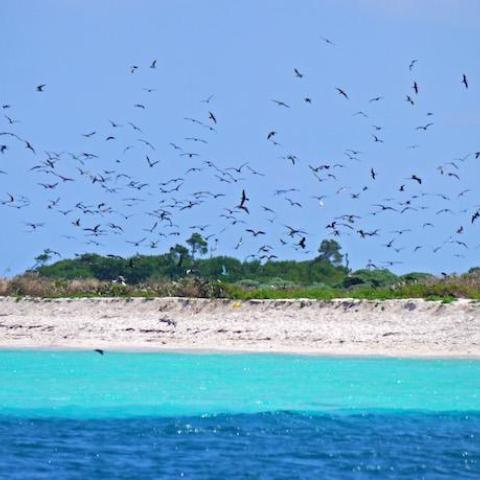
Fort Jefferson on Garden Key, Dry Tortugas National Park / NPS file
Restoration and repairs continue at Dry Tortugas National Park, nearly eight years after Hurricane Irma caused extensive damage at the site.
A recent social media post announced that work is complete on the historic Loggerhead Key Lighthouse keeper's residence, located on one of the seven small islands that make up the park.
"Upgrades include a historically accurate roof, reinforced roof-to-masonry connections, impact-rated windows and hurricane-rated exterior doors, masonry repairs, and restoration of key architectural details such as the principal porch ceiling and column," the post noted. "This effort faced numerous challenges due to the island’s remote location, repeated hurricane damage (including the destruction of the dock), as well as other logistical hurdles."
Dry Tortugas sits about 70 miles west of Key West, Florida. Its islands are composed of coral reefs and sand. Several parts of the park were severely damaged by Irma in 2017 and hit again by Hurricane Ian in 2022. Tropical Storm Debby and hurricanes Helene and Milton brushed the islands last year.
One area still undergoing repairs is the moat wall around Fort Jefferson. The fort, dating back to 1846, is the main attraction at the park and is accessible via ferry and seaplane. Other islands in the park, including Loggerhead Key, are reachable only by private watercraft. The area is popular for snorkeling and wildlife viewing.
The Loggerhead Key Lighthouse was built in 1858. It was maintained by the U.S. Lightkeeper Service through World War II and then transferred to the Coast Guard. The light was no longer manned after it was fully automated in 1982.
The original lighthouse keeper's home burned in 1945 but a new one had already been constructed by that time, according to the National Park Service history of the site.
Plans are to use the newly restored house for visitor interpretation and to support employees and volunteers on the island.




 Support Essential Coverage of Essential Places
Support Essential Coverage of Essential Places






